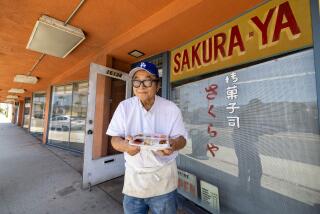Croatia brought sakka home to a Japanese city
Tokyo â THERE ARE no Croats living near Tokamachi, a city of 63,000 nestled in the snow belt that rises off the Sea of Japan coast. Or at least none that Yutaka Wakayama has met.
But Tokamachi has a Croatian restaurant. Its soups and stuffed cabbage are a culinary ode to the Croatian national soccer team that lived and trained in the city throughout the 2002 World Cup that Japan co-hosted with South Korea.
Tokamachi also has a lovely glass trophy donated by the Croatian Football Federation for which local youth teams compete, and a soccer field named for a Balkan country. The field is maintained by 100 or so volunteers of the Crotia supporters club run by Wakayama. âThe Croatian team is like a family to us,â he said. Such are the unexpected footprints a World Cup can leave behind.
The 2002 World Cup trampled all over Japan. Before it arrived, soccer (called sakka here, not football) was played mostly in rundown stadiums, a sport struggling to bust out in a country where baseball has always been king. Today, the domestic J-League is booming, and teams play in 10 state-of-the-art stadiums, a World Cup legacy. Soccer has gone mainstream in a nation famous for its fads and brief attention span.
Take Tokamachi, where soccer was regarded as foreign spice for cosmopolitans who live in such places as Tokyo. Some people in town didnât even know Croatia from, say, Cameroon. The Japanese pronunciation of âCroâ sounds like kuroi, the Japanese word for âblack,â and according to Wakayama, a few of the older locals expected the Croatian team to be black.
City officials realized they had some educating to do before their soccer guests arrived in 2002. They sent leaflets to all 25,000 households describing Croatiaâs geography, history and team. They decked out the main street in Croatian flags and commissioned a local designer to make some of Tokamachiâs famous kimonos in red-and-white-check Croatian colors for women to wear when welcoming the players
The Croats loved it. They opened their practices to the public and put on a soccer clinic for kids. They played 25-on-200 soccer with students, using 10 balls. Led by superstar Davor Suker, who was a top scorer in the previous World Cup, the players signed autographs.
This time around, 3,500 local elementary school students have been folding origami paper cranes to send to the Croatian team, a traditional Japanese wish for peace and good health.
A wish for victory is another matter, however. Japan and Croatia are in the same first-round group in this World Cup and will play each other in Nuremberg, Germany, on June 18.
Tokamachi officials want to invite Croats living in Japan to watch the game with them -- but havenât been able to find any nearby. They hope the Croatian Embassy can locate a few in Tokyo and send them along on the 18th.
Wakayama guarantees theyâll get a warm welcome, though he politely rejects any suggestion Tokamachi will be pulling for Croatia. âI donât know if itâs unpatriotic or not, but because we have a good relationship with Croatia, itâs OK to cheer for them,â he said.
âBut naturally we will cheer the Japanese team,â he said. âWe are Japanese.â
More to Read
Sign up for Essential California
The most important California stories and recommendations in your inbox every morning.
You may occasionally receive promotional content from the Los Angeles Times.










